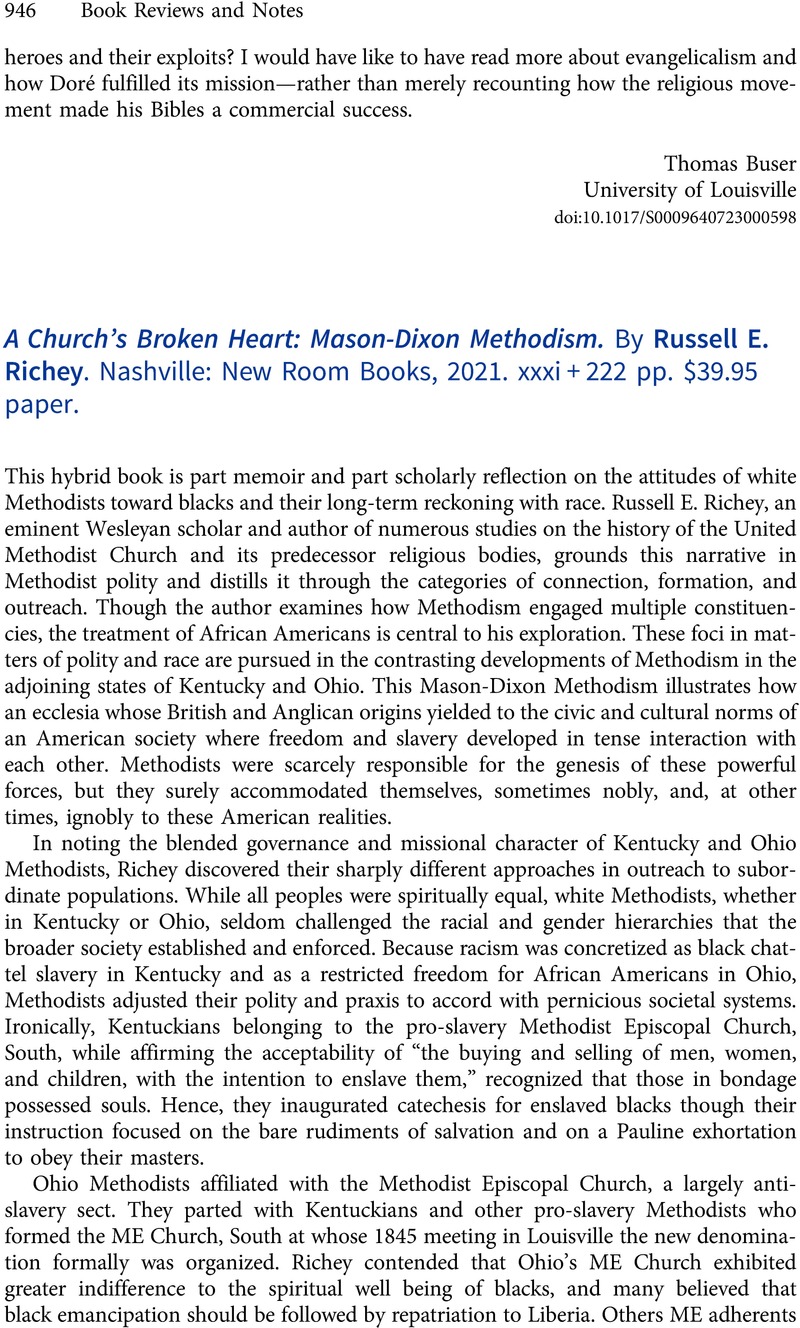No CrossRef data available.
Article contents
A Church's Broken Heart: Mason-Dixon Methodism. By Russell E. Richey. Nashville: New Room Books, 2021. xxxi + 222 pp. $39.95 paper.
Review products
A Church's Broken Heart: Mason-Dixon Methodism. By Russell E. Richey. Nashville: New Room Books, 2021. xxxi + 222 pp. $39.95 paper.
Published online by Cambridge University Press: 03 May 2023
Abstract
An abstract is not available for this content so a preview has been provided. Please use the Get access link above for information on how to access this content.

- Type
- Book Reviews and Notes
- Information
- Copyright
- Copyright © The Author(s), 2023. Published by Cambridge University Press on behalf of American Society of Church History


